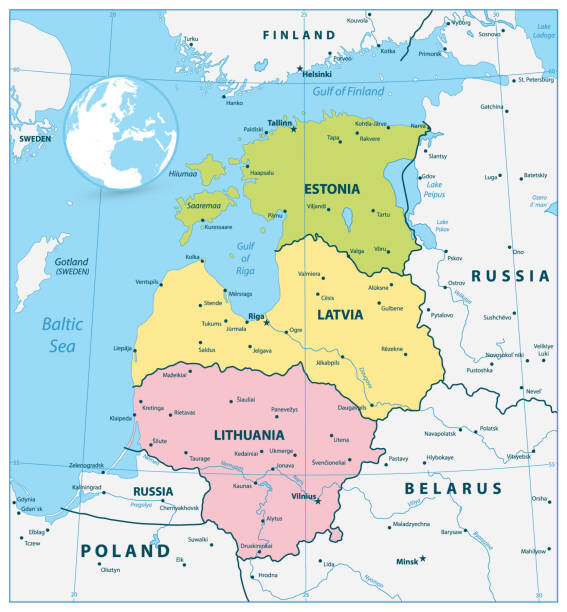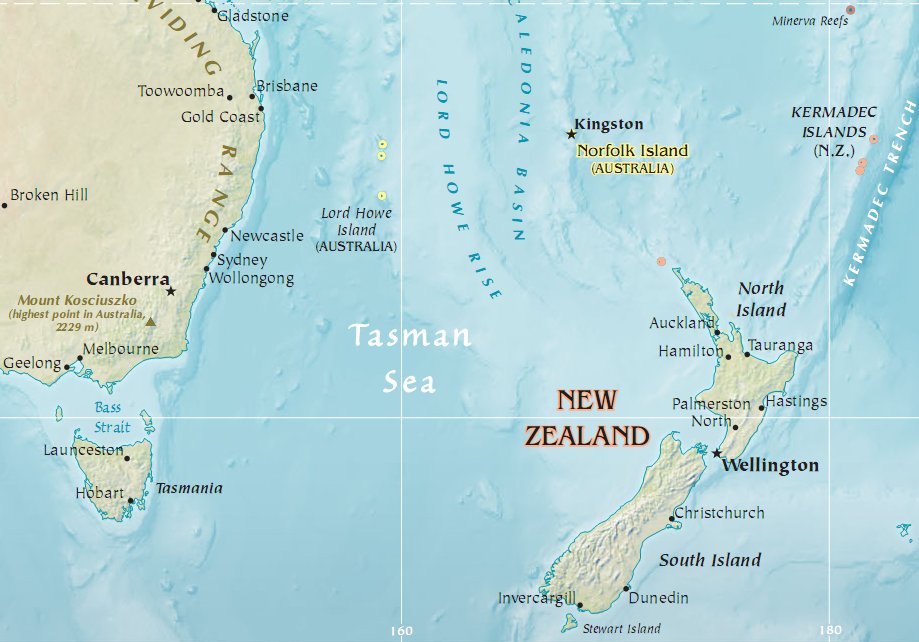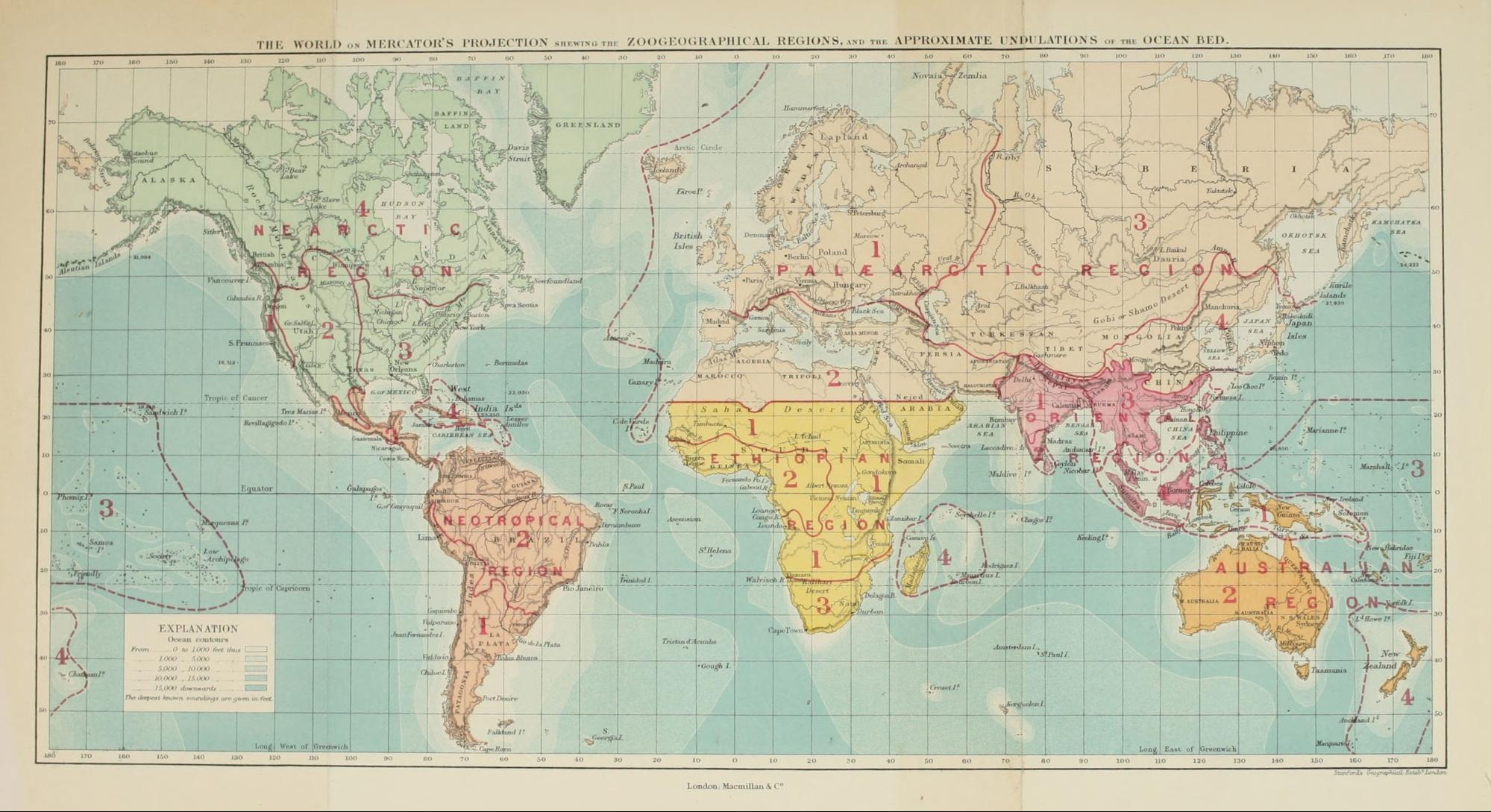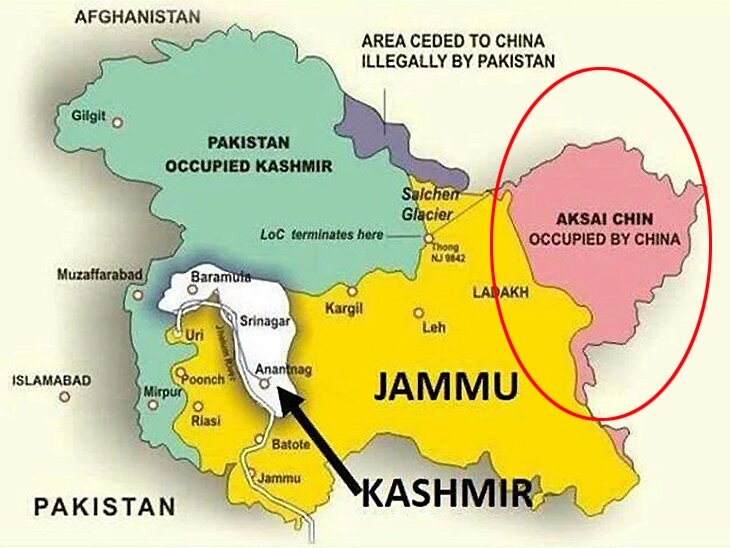Travel Bubble
Why in News
Recently, the Baltic countries of Estonia, Latvia and Lithuania started a travel bubble to help put their economies back on track after Covid-19 lockdowns.
- All three have been fairly successful at managing the Covid-19 outbreak and remaining comparatively safe.
- In the Estonia-Latvia-Lithuania travel bubble, residents would be able to travel freely by rail, air and sea without quarantine measures.
Baltic Countries
- Baltic countries, the northeastern region of Europe, include the countries of Estonia, Latvia and Lithuania, on the eastern shores of the Baltic Sea.
- The Baltic states are bounded on the west and north by the Baltic Sea, which gives the region its name, on the east by Russia, on the southeast by Belarus and on the southwest by Poland and an exclave of Russia.
- In 1991, their then popularly elected governments declared independence from the Union of Soviet Socialist Republics (USSR) with overwhelming support.
- All three of them are members of the European Union (EU) and are sparsely populated (Lithuania-28 lakh, Latvia-19.2 lakh, Estonia-13.3 lakh people).
- India and Baltic countries have historical connect and common linguistic roots. The cutting edge technology and innovation ecosystems of the Baltic countries complement India’s huge market and appetite for these technologies.
Key Points
- Travel Bubble:
- Creating a travel bubble involves reconnecting countries or states which have shown a good level of success in containing the Covid-19 pandemic domestically.
- Such a bubble would allow the members of the group to restart trade ties with each other and open travel and tourism.
- According to a report, potential travel bubbles among better-performing countries around the world would account for around 35% of the global Gross Domestic Product (GDP).
- Travel bubbles are favoured by smaller countries because they are likely to benefit after being able to trade again with larger partners.
- Criteria for Entering the Travel Bubble:
- People from the outside countries, willing to join the bubble corridor, will have to go into isolation for 14 days.
- One should not have travelled outside the member countries of the travel bubble, in the past 14 days.
- One should not be infected with coronavirus and should not have come in contact with anyone who has been coronavirus infected.
- Other Countries to Start:
- Australia and New Zealand reached an agreement to form a travel bubble, once it becomes safe to operate flights between them. Once it opens, the trans-Tasman zone (around Tasman Sea) will allow travel without a quarantine period.
- Trans-Tasman Zone: Trans-Tasman Travel Arrangement is an arrangement between Australia and New Zealand which allows for the free movement of citizens of one of these countries to the other. The arrangement came into effect in 1973 and allows citizens of each country to reside and work in the other country, with some restrictions.
- Australia and New Zealand reached an agreement to form a travel bubble, once it becomes safe to operate flights between them. Once it opens, the trans-Tasman zone (around Tasman Sea) will allow travel without a quarantine period.
- China and South Korea have launched a fast track channel for business travellers.
- In the USA, travel bubbles are being suggested to group states who are doing well against the pandemic.
Possibility of Covid-19 being Syndemic
Why in News
The possibilities of Covid-19 being syndemic have been raised in the backdrop of the World Health Organization (WHO) announcement that Covid-19 less likely to be eliminated (i.e. may become endemic).
- The rapid spread of Covid-19 across the world has been characterised as ‘Pandemic’ by the WHO.
Note
- Pandemic: A pandemic is declared when a new disease for which people do not have immunity spreads around the world beyond expectations.
- Epidemic: An epidemic is a large outbreak, one that spreads among a population or region. It is less severe than pandemic due to a limited area of spread.
- Endemic: A disease is called endemic when the presence or usual prevalence of its infectious agent is constant within a given geographical area or population group.
Key Points
- Description:
- A syndemic is a situation when two or more epidemics interact synergistically to produce an increased burden of disease in a population.
- A situation of syndemic was first described by medical anthropologist Merrill Singer in the mid-1990s.
- Possibility of Syndemic in the Current Scenario:
- Covid-19 Pandemic and Presence of Dengue, Malaria:
- The least possibility of elimination of Covid-19 pandemic and warning about the second wave of Covid-19 infections worldwide have reinforced the presence of Covid-19 for the long term.
- Meanwhile, the alarm is being raised about diseases like dengue and malaria emerging with the upcoming monsoon season in tropical South Asia.
- Thus, there is a possibility that the world will face increased burden of the diseases and thus the situation of syndemic.
- Presence of Antibiotic Resistance:
- The second wave of infection due to Covid-19 is suspected to be seen in those with weakened immunity.
- At the same time, the world already faces antibiotic resistance and if Covid-19 deepens as a syndemic in populations with antibiotic resistance, the world will face comorbidities.
- Comorbidity is the presence of one or more additional conditions co-occurring with a primary condition.
- Antibiotic resistance is the ability of bacteria or other microbes to resist the effects of an antibiotic. Antibiotic resistance occurs when bacteria change in some way that reduces or eliminates the effectiveness of drugs, chemicals, or other agents designed to cure or prevent infections.
- Covid-19 Pandemic and Presence of Dengue, Malaria:
- Past Instances of Syndemic:
- The 1957 Asian influenza pandemic observed deaths not only due to the primary viral infection, but also due to secondary bacterial infections among influenza patients. In short, it was a viral/bacterial syndemic.
- Meanwhile, researchers have shown that in Kenya, 5% of Human Immunodeficiency Virus (HIV) infections are due to higher HIV infectiousness of malaria-infected HIV patients.
- Possible Solutions:
- Whole world will need to implement large-scale population testing for Covid-19 (such as PCR and antibody testing) to contain it at its base level.
- The societies around the world will also have to consider innovations in population health surveillance technology and develop creative business models at a scale.
Objections to Etalin Hydroelectric Project
Why in News
Recently, some conservationists and former members of the National Board of Wildlife (NBWL) have sought rejection of approval for the Etalin Hydroelectric Project in the Dibang Valley, Arunachal Pradesh.
Key Points
- The Project is based on the river Dibang and is proposed to be completed in 7 years.
- Dibang is a tributary of the Brahmaputra river which flows through the states of Arunachal Pradesh and Assam.
- It envisages construction of two dams over the tributaries of Dibang: Dir and Tangon.
- The Project falls under the richest bio-geographical province of the Himalayan zone and would be located at the junction of major biogeographic zones like Palaearctic Zone and Indo-Malayan Zone.
- It is expected to be one of the biggest hydropower projects in India in terms of installed capacity.
Biogeographic Regions
- These are the large distinctive units of similar ecology, biome representation, community and species.
- Originally, six biogeographic regions were identified: Palearctic (Europe and Asia), Nearctic (North America), Neotropical (Mexico, Central and South America), Ethiopian/Afrotropic (Africa), Oriental/Indo-Malayan (Southeast Asia, Indonesia) and Australian (Australia and New Guinea). Currently, eight are recognised since the addition of Oceania (Polynesia, Fiji and Micronesia) and Antarctica.
Palaearctic Zone
- This includes arctic and temperate Eurasia and all islands surrounding the continent in the Arctic, in the sea of Japan and the eastern half of the North Atlantic.
- It also includes the Macaronesian islands, Mediterranean North Africa and Arabia.
Indo-Malayan Zone
- Its natural boundaries contain tropical Asia from the Balochistan mountains of Pakistan eastward to the Indian subcontinent south of the Himalayan crest, including the tropical southern fringe of China with Taiwan, the whole of Southeast Asia and the Philippines.
Background
- The Forest Advisory Committee (FAC) of the Ministry of Environment Ministry of Environment, Forest and Climate Change (MoEFCC) highlighted that the project will clear 2.7 lakh trees in subtropical evergreen broad-leaved forest and subtropical rainforests.
- According to a sub-committee of FAC, the project may be allowed subject to the condition that the financial outlay of Wildlife Conservation Plan be deposited to the Forest Department by user agency on the basis of a study done by the Wildlife Institute of India (WII).
- However, there were protests by green groups due to which MoEFCC transferred the project to the Union Power Ministry.
Criticism
- Conservationists highlighted that the FAC sub-committee ignored established tenets of forest conservation and related legal issues while recommending the proposal.
- FAC ignored the threat of forest fragmentation.
- Forest fragmentation results from ill-planned intrusion of developmental projects into contiguous landscapes with natural forests and threatens rare floral and faunal species in a biodiversity hotspot.
- FAC’s site inspection report was also questioned for leaving out key details like number of grids across an altitudinal range inspected and the status of vegetation there, direct and indirect signs of wild animals listed in the various schedules of the Wildlife Protection Act, 1972 and overall appreciation of the ecological value of the area.
- The inadequacy of the Environment Impact Assessment report on Etalin was also highlighted.
- Wildlife officials ignored observations which include the threat to 25 globally endangered mammal and bird species in the area to be affected.
- The proposed mitigation measures like setting up butterfly and reptile parks are inadequate and insufficient.
Aksai Chin
Why in News
Recently, Chinese media has accused India of building defence facilities in the Galwan Valley region of the contested Aksai Chin area.
Key Points
- China controls Aksai Chin area, while India claims that it is part of Indian territory (Union territory of Ladakh).
- Chinese media claims that the actions by the Indian side have seriously violated China and India’s agreements on border issues.
- It also claims that India has violated China’s territorial sovereignty and harmed military relations between the two countries.
- India has not responded to the accusation yet.
- The latest round of conflict comes days after Indian and Chinese troops clashed in the NakuLa area in north Sikkim and Pangong Tso in eastern Ladakh.
- India and China have an unresolved 3488 km long border dispute that has cast a shadow on ties for decades.
- Prolonged rounds of negotiations have failed to resolve the dispute between the two neighbours.
- However, in the Wuhan and Mahabalipuram summits, both China and India had reaffirmed that they will make efforts to “ensure peace and tranquility in the border areas”.
- Also, on 1st April, 2020 India and China completed their 70 years of diplomatic relations.
Dispute over Aksai Chin
- During the time of British rule in India, two borders between India and China were proposed- Johnson’s Line and McDonald Line.
- The Johnson’s line (proposed in 1865) shows Aksai Chin in erstwhile Jammu and Kashmir (now Ladakh) i.e. under India’s control whereas McDonald Line (proposed in 1893) places it under China’s control.
- India considers Johnson Line as a correct, rightful national border with China, while on the other hand, China considers the McDonald Line as the correct border with India.
- At present, Line of Actual Control (LAC) is the line separating Indian areas of Ladakh from Aksai Chin. It is concurrent with the Chinese Aksai Chin claim line.
New Super-Earth Planet
Why in News
Recently, scientists have discovered a rare new Super-Earth planet. It is among only a handful of extra-solar planets that have been detected with both sizes and orbits close to that of Earth.
- An exoplanet or extrasolar planet is a planet outside the Solar System.
Key Points
- Mass :
- Host Star: The host star of the Super-Earth’s system has about 10% the mass of the Sun. The lower mass of the host star makes a ‘year’ on the planet of approximately 617 days.
- Super-Earth Planet: The planet is expected to have a mass between the Earth’s mass and that of Neptune.
- Orbit:
- With reference to the Solar system, the Super-Earth planet would orbit at a radius anywhere between that of Venus and Earth in our solar system.
- Planet Discovery:
- The Super-Earth planet has been discovered using the gravitational microlensing technique.
- Gravitational microlensing is an astronomical phenomenon due to the gravitational lens effect. It can be used to detect objects that range from the mass of a planet to the mass of a star, regardless of the light they emit.
- The microlensing effect is rare, with only about one in a million stars in the galaxy being affected at any given time.
- Furthermore, such type of observation does not repeat, and the probabilities of catching a planet at the same time are extremely low.
- The other methods for exoplanets discovery include:
- Radial Velocity Method: The planet causes the parent star to wobble around in its orbit, and as the planet moves to and fro, it changes the color of the light we see.
- Transit Method: When an exoplanet passes in front of its star, some of the starlight passes through its atmosphere. Scientists can analyze the colors of this light in order to get valuable clues about its composition.
- Direct Image Method : The direct image can take pictures of exoplanets by removing the glare of the stars they orbit.
- Astrometry: The orbit of the planet can cause a star to wobble around in spaces in relation to nearby stars in the sky. This method is quite similar to the Radial Velocity method. However, here scientists take a series of images of a star and some of the other stars that are near it in the sky. In each picture, they compare the distances between these reference stars and the star they're checking for exoplanets.
Exoplanet
- An exoplanet or extrasolar planet is a planet outside the Solar System. The first confirmation of detection of exoplanets occurred in 1992.
- Exoplanets are very hard to see directly with telescopes. They are hidden by the bright glare of the stars they orbit. So, astronomers use other ways to detect and study exoplanets such as looking at the effects these planets have on the stars they orbit.
Domicile Certificates in J&K
Why in News
Recently, the Jammu and Kashmir administration notified the J&K Grant of Domicile Certificate (Procedure) Rules 2020.
- It amended the rules for issuing domicile certificates in the Union territory.
- The new rules provide a simple time-bound and transparent procedure for issuance of domicile certificates.
Key Points
- J&K Grant of Domicile Certificate (Procedure) Rules 2020:
- It would provide the basis for issuing domicile certificates to those who meet the conditions as stated in the Centre’s gazette notification that introduced the domicile clause through an amendment to the Jammu And Kashmir Civil Services (Decentralisation And Recruitment) Act, 2010.
- Domicile certificates have now been made a basic eligibility condition for appointment to any post under the Union Territory of J&K.
- Under the amended rules, eligible non-locals can also apply for the certificate. The new process will allow West Pakistan refugees, safai karamcharis and children of women who married non-locals to apply for jobs.
- Domicile: Under Jammu and Kashmir Reorganisation (Adaptation of State Laws) Order 2020, domicile is defined as any person who has resided for a period of 15 years in the UT of J&K or has studied for a period of seven years and appeared in class 10th and 12th examination in an educational institution located in the UT of J&K. It also has provisions related to migrants and government officials.
- Time Stipulated under the Rules:
- It sets a fast track process in motion to issue the certificates within a stipulated time of 15 days.
- If the certificate is not issued within the stipulated time, the applicant shall be free to approach an appellate authority.
- The decision of the appellate authority shall be binding upon the issuing authority and the orders to complied within 7 days, failing which the defaulting officer has to face a penalty of Rs. 50,000, to be recovered from his/her salary.
- Eligibility:
- Permanent Residents: All Permanent Resident Certificate holders and their children living outside J&K can apply for the certificates.
- Migrants: Kashmiri migrants living in or outside J&K can get domicile certificates by producing their Permanent Residence Certificate (PRC), ration card copy, voter card or any other valid document.
- Government Officials: Central government officials, All India Service Officers, officials of Public Sector Undertakings, Autonomous bodies of the Central Government, Public Sector Banks, Statutory bodies, Central Universities and recognised research institutes of the Central Government, who have served in the Union Territory of Jammu and Kashmir for a total period of ten years, are eligible for the certificate.
Ashwagandha and Anti-Covid-19 Drug
Why in News
Recently, researchers of IIT-Delhi in collaboration with Japan’s National Institute of Advanced Industrial Science and Technology (AIST) have found that the ayurvedic herb Ashwagandha has “therapeutic and preventive value” against Covid-19 infection.
Key Points
- The publication of the coronavirus genome and structure have triggered drug designing, devising and development using informatics and experimental tools across the world.
- Researchers from IIT-Delhi and AIST have used Ashwagandha and propolis based compounds to target the main coronavirus’s enzyme, known as the Main protease or Mpro.
- Mpro plays a key role in mediating viral replication.
- Enzymes are biological molecules (typically proteins) that regulate the rate of virtually all of the chemical reactions that take place within living organisms. E.g digestion.
- Replication is the process by which a DNA molecule is copied to produce two identical DNA molecules.
- In replication whenever a cell divides, the two new daughter cells contain the same genetic information, or DNA, as the parent cell.
- The researchers have found that Withanone (Wi-N), a natural compound derived from Ashwagandha and Caffeic Acid Phenethyl Ester (CAPE), an active ingredient of New Zealand propolis, have the potential to interact with and block the activity of Mpro.
- Recently, the Indian government has also set up a task force to launch its clinical research studies on some Ayurvedic medicines that can be used to boost the immune system and control coronavirus.
- The government has also launched the ‘AYUSH Sanjivani’ App.
- The app intends to generate data on usage of AYUSH (Ayurveda, Yoga & Naturopathy, Unani, Siddha, Sowa-rigpa and Homoeopathy) advocacies and measures among the population and its impact in prevention of Covid-19.
Ashwagandha
- Ashwagandha (scientific name- Withania somnifera) is a medicinal herb. It is reputed as an immunity enhancer.
- It is classified as an adaptogen, which means that it can help the body to manage stress.
- Ashwagandha also boosts brain function and lowers blood sugar, and helps fight symptoms of anxiety and depression.
- Ashwagandha has shown clinical success in treating both acute and chronic rheumatoid arthritis.
- Rheumatoid arthritis (RA) is an autoimmune disease that can cause joint pain and damage throughout your body.
- An autoimmune disease is a condition in which your immune system mistakenly attacks your body.
Propolis
- Propolis or bee glue is a resinous mixture (a sticky chemical compound) that honey bees produce by mixing saliva and beeswax with gums gathered from tree buds, sap flows, or other botanical sources.
- Propolis is used against infections caused by bacteria, viruses, fungus etc.
- It is used for boosting the immune system and for treating gastrointestinal problems.
Webinar on Uttarakhand’s Tourism Potential
Why in News
Recently, the 20th session of the Dekho Apna Desh Webinar series was organised by the Ministry of Tourism titled “Uttarakhand Simply Heaven”.
Key Points
- It highlighted the potential of tourism in Uttarakhand’s two regions namely Kedar Khand (Garhwal Region) and Manu Khand (Kumaon Region).
- Popular Destinations:
- Four pilgrim destinations - Gangotri, Yamunotri, Badrinath (on the bank of River Alaknanda, dedicated to Lord Vishnu), Kedarnath (dedicated to Lord Shiva), collectively known as Char Dham.
- Hemkund Sahib: Formerly known as Gurudwara Shri Hemkund Sahib Ji, it is a Sikh place of worship and pilgrimage site in Chamoli district. It is devoted to Guru Gobind Singh, the tenth Sikh Guru, and finds mention in Dasam Granth, a work dictated by Guruji himself.
- UNESCO World Heritage Site of Valley of Flowers and Nanda Devi (National Parks).
- Jim Corbett National Park (oldest national park of the country) and Rajaji Tiger Reserve.
- Uttarakhand’s Adventure Tourism Potential such as:
- River rafting at Rishikesh and Pittoragarh, winter sports and skiing in Auli (hill station), Paragliding at Tehri Dam (on river Bhagirathi) and Kaushani (hill station).
- Innumerable options for trekking available such as at Chopta and Pindari Glacier.
International Museum Day
Why in News
The Ministry of Culture hosted a webinar on “Revitalising Museums and Cultural Spaces” to celebrate the International Museum Day.
- The National e-Governance Division (NeGD) created by the Ministry of Electronics & Information Technology (MeitY) provided technical assistance for conducting the Webinar.
Key Points
- The International Museum Day is celebrated every year on 18 May to raise awareness about the fact that “museums are an important means of cultural exchange, enrichment of cultures and development of mutual understanding, cooperation and peace among peoples.”
- The International Museum Day 2020 was celebrated with the theme “Museums for Equality: Diversity and Inclusion”.
- International Museum Day was instituted in 1977 by the International Council of Museums (ICOM).
International Council of Museum
- ICOM is the main and only organisation of museums and museum professionals with global scope, committed to promotion and protection of natural and cultural heritage, present and future, tangible and intangible.
- It was created in 1946 and is headquartered in Paris, France. It serves as a network of museum professionals (35,000 members in 137 countries) acting in a wide range of museum- and heritage-related disciplines.
Administration of Museums in India
- Multiple ministries hold charges of various Museums.
- Not all Museums are administered by the Ministry of Culture.
- Some are run without government support by a handful of people under a Board of Trustees.
- The Budget 2020 proposed the setting up of an Indian Institute of Heritage and Conservation with the status of a deemed university under the Ministry of Culture.
- The National Portal and Digital Repository for Indian Museums (under the Ministry of Culture) have been launched for digitisation of the collections of the Museums.
Notable Museums in India
- National Museum, New Delhi (Subordinate Office under the Ministry of Culture)
- National Gallery of Modern Art, Bengaluru
- Victoria Memorial Hall (VMH), Kolkata
- Asiatic Society, Kolkata
- National Museum of Natural History (NMNH), New Delhi
A Rare Palm from Andamans
Why in News
Recently, a rare palm, Pinanga andamanensis, has been successfully cultivated at Jawaharlal Nehru Tropical Botanic Garden and Research Institute (JNTBGRI) based at Palode, Thiruvananthapuram (Kerala).
Key Points
- Pinanga andamanensis:
- It is a rare palm endemic to South Andaman Island. Its entire population of some 600 specimens naturally occurs only in a tiny, evergreen forest pocket in South Andaman’s Mount Harriet National Park.
- Endemic species are those plants and animals that exist only in one geographical region.
- The name is derived from ‘Penang’, the modern-day Malaysian state. Penang itself has its origins in Pulau Pinang which means Island of the Areca Nut Palm.
- It has strong resemblance with the areca palm tree (widely used for bright interiors).
- It has a small gene pool which means the species is vulnerable to natural calamities such as cyclones, earthquakes.
- JNTBGRI scientists term it a critically endangered species and one of the least known among the endemic palms of the Andaman Islands.
- It is a rare palm endemic to South Andaman Island. Its entire population of some 600 specimens naturally occurs only in a tiny, evergreen forest pocket in South Andaman’s Mount Harriet National Park.
- Cultivation at JNTBGRI:
- Thiruvananthapuram has been referred as its second home as the species has started flowering in this Institute.
- JNTBGRI will resume seed germination experiments for mass multiplication as part of the conservation strategy.
Mount Harriet National Park
- It is located in the south of the Andaman and Nicobar islands.
- Mount Harriet is the third-highest peak in the Andaman and Nicobar archipelago next to Saddle Peak in North Andaman and Mount Thuillier in Great Nicobar.
- The park is covered with evergreen forest pockets.
- It is rich in flora and faunal species like andaman wild pigs, saltwater crocodiles, butterflies and palm trees.




